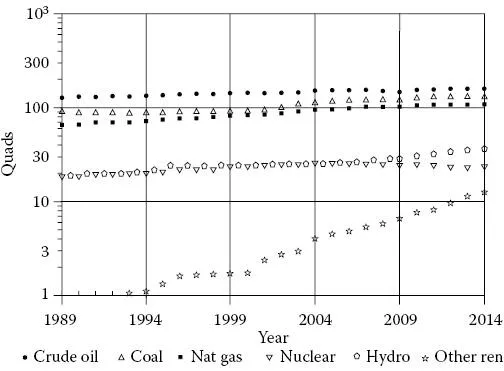On June 26, 1997, the U.S. Million Solar Roofs Initiative (MSRI) was announced at the United Nations Special Session on Environment and Development in New York [1]. It was proclaimed that “Now we will work with businesses and communities to use the sun’s energy to reduce our reliance on fossil fuels by installing solar panels on 1 million more roofs around our nation by 2010. Capturing the sun’s warmth can help us to turn down the Earth’s temperature.” In 1997, little concern was being expressed in the public sector about energy problems and perhaps even less discussion related to global warming, so this statement by President Clinton carries special significance from a 2016 perspective. Now, less than 20 years later as this chapter goes to press, both topics are receiving significant attention. By the end of 2007, it is estimated that more than 600,000 solar systems had been installed around the United States [2] and the State of California had introduced its own MSRI [3]. The 600,000 installations included photovoltaic (PV), solar water heating, and solar pool heating systems. In the 12 months of 2013, over 145,000 residential PV systems were installed in the United States, in addition to over 1 GW of PV installed by U.S. utilities [4].
But installations have not been limited to the United States. Germany, China, Japan, Spain, and many other countries have also had even more aggressive renewable energy programs [2,3]. In 2013, China and Japan were the largest markets for PV [4] and the United States was falling behind.
In the United States, more and more states are now adopting renewable portfolio standards (RPSs), which set goals for the percentage of the electrical energy mix to be provided by renewable sources by a certain date. Implementation of these goals will require engineers who understand the how and why of PV system design. RPSs, coupled with carefully devised incentive programs, significant reductions in installed system cost, and significant improvements in reliability have now provided the momentum for a sustained effort in the deployment of solar technologies well beyond the year 2030. In fact, the MSRI may need to be extended to a 100 Million Solar Roofs Initiative to meet the sustainable energy needs of future generations. According to CNN Money, the solar industry added 35,000 jobs in 2015 [5]. This book is dedicated to the engineers and technicians who have been and may become involved in turning this dream into reality.
The human population of the Earth has now passed 7.3 billion [6], and all of these inhabitants need the energy necessary to sustain their lives. Exactly how much energy is required to meet these needs and exactly what sources of energy will meet these needs will be questions to be addressed by present and future generations. One certainty, however, is that developing nations will be increasing their per capita energy use. For example, in 1997, the Peoples Republic of China was building electrical generating plants at the rate of 300 MW per week. These plants used relatively inexpensive, old, inefficient, coal-fired technology and provided electricity for predominantly inefficient end uses [7]. By 2008, pollution from factories and power plants in China had become so intense that some Olympic athletes had expressed reluctance to compete in the 2008 Olympic Games in Beijing for health reasons. The potential consequences to the planet of continued increase in the use of fossil fuels are profound [8,9]. Before proceeding with the details of PV power systems, a promising source of energy for the future, it is instructive to look at the current technical and economic energy picture. This will hopefully enable the reader to better assess the contributions that engineers will need to make toward a sustainable energy future for the planet.
Figure 1.1 shows the increase in worldwide energy production by source between 1989 and 2014 [10]. In 2000, worldwide annual primary energy consumption was 397.40 quads [11]. The developed countries of the world consumed approximately 75% of this energy, while nearly 2 billion people in developing countries, mostly within the tropics, remained without electricity. In 2005, worldwide primary energy consumption increased to 462 quads [12] and 2 billion people still lived without electricity.
Figure 1.1Growth of worldwide energy production by source. (Data from BP Statistical Review of World Energy, 64th Ed., June 2015, http://www.bp.com/content/dam/bp/pdf/energy-economics/statistical-review-2015/bp-statistical-review-of-world-energy-2015-full-report.pdf.)
There can be a time delay between market forces and market responses. Note that the production of crude oil continued upward after the 1973 oil embargo and the subsequent significant crude oil price increases during the remaining 1970s and early 1980s. During this period, high crude oil prices spurred the development of energy efficiency legislation, such as the National Energy Conservation and Policy Act, codes for energy efficiency in building construction and increased vehicle fleet mileage requirements. Consumers also responded by reducing energy use by lowering thermostats and installing insulation and other energy conservation measures. The result was lower crude oil production for a period in the mid-1980s, since the demand was lower. During this same period, more efficient use of electricity resulted in the cancellation of nuclear plant construction, resulting in a significant decrease in the growth rate of nuclear-produced electricity. Finally, concern over oil price control and embargoes prompted a switch from crude oil to coal and natural gas for use in fossil-fired electrical ...

